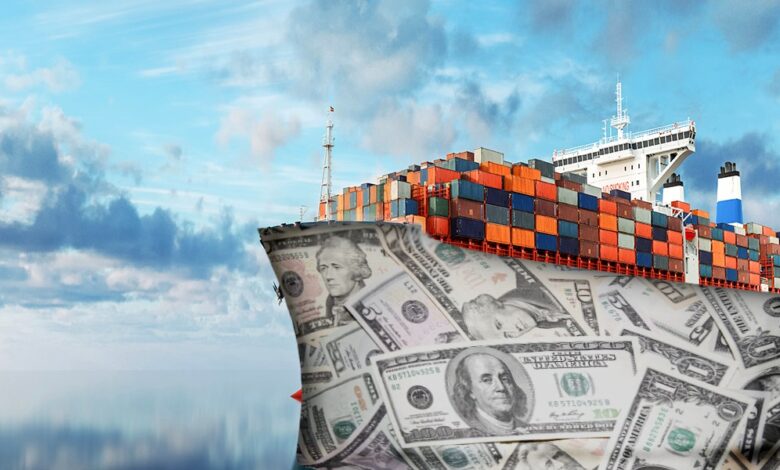Shipping: innocent victim of the global financial crisis?

Banking regulations are changing, and that’s potentially bad news for shipping, as Pierre Aury explains.
Long gone are the days of shipping being a regulation light industry. On the International Maritime Organization (IMO) website one can find for example the very long list of IMO new regulations which came into force in 2023 and are to become into force in the coming years.
Most of these new regulations or amendments to existing ones are related to safety at sea so it is hard to complain about them adding hundreds of pages to an ever-expanding body of existing rules.
At the same time the European Union is about to push the start button on its wonky pet emissions trading scheme project for ships above 5000 gt as from January 1. Nobody is quite sure how this will practically work while at the same time everybody knows that no ETS has ever led to a drop of emissions contrary to covid which in shipping led to a drop of nearly 10% of CO2 emissions in 2020 or offshoring of dirty industries from Europe to China which led to a decrease of EU emissions of probably 30% from their peak.
All these new rules which are requiring shipping market participants to beef up their technical and legal teams are rules directed at shipping. But there are other rules which are impacting shipping indirectly. For example, changes in banking prudential rules also called capital adequacy rules, can impact shipping through restricting access to loans to finance ships and/or make the terms of these loans stricter and therefore more difficult to comply with. These rules are for the main part established by the Basel committee which is hosted by the Bank of International Settlements or BIS which is headquartered in Basel. The BIS is a strange animal. Created in the 1930s it is the self-proclaimed bank of central banks whatever that means. The Basel committee was established much later by the central banks of the G10 countries in 1974 in the aftermath of the near miss global banking crisis which happened that summer. Banks have always had this uncanny propensity to see their balance sheets comply with AIG vice chairman Jacob Frenkel’s description of AIG’s balance sheet, a description he volunteered in front of a group of top global bankers at a lunch in the aftermath of the 2008 crisis: “The left side of the balance sheet has nothing right and the right side of the balance sheet has nothing left. But they are equal to each other. So accounting-wise we are fine.”
Since its inception the Basel Committee has produced a series of prudential standards for bank’s capital adequacy. The simple idea behind this is that banks should set aside a certain amount of capital against every asset (e.g. loans) they carry on their balance sheet creating de facto a buffer to absorb a drop in value of these assets. These standards are commonly known as Basel I, Basel II and more recently Basel III (or Basel IV for the latest version of Basel III).
For the older readers Basel I introduced what was referred to as the Cooke ratio which was defined as a percentage of capital relative to its risk-adjusted assets. In Basel I, which came into force in 1988, the minimum value of the Cooke ratio was set at 8%. Simply put and not taking into account the risk adjustment, a bank needed $8m of capital in order to lend $100m. Banks worldwide found this ratio too punishing and successfully lobbied to have it changed in 2004 with Basel II. Basel II made it possible for banks to use their own internal risk models to calculate regulatory capital requirements which of course banks took advantage of in order to justify setting aside less capital enabling them to do more business with the same capital base and for their management to cash more bonuses. A clear case of giving the keys of the blood bank to the vampires. This of course ended up in tears with the 2008 crisis with humongous losses. It is estimated that collectively banks lost up to $3trn during that crisis, not to mention the nearly $400bn they paid in fines and settlements for claims in the following years. An abject failure of capital (in)adequacy rules. An abject failure which is ongoing.
According to the European Central Bank as of the end of December 2022 European banks had about €124bn of unrealised losses in their bonds portfolios alone. Recently the Swiss National Bank (SNB) organised over a weekend a shotgun wedding between UBS and Credit Suisse when it became obvious that the$54bn lifeline it had thrown to Credit Suisse was not enough to stop the rot. Ironically the SNB itself had recorded a €132bn loss in 2022, marginally less than the $164bn loss booked the same year by the Norwegian oil fund.
In this sea of red ink losses on shipping loans are insignificant. For example, at the peak in 2008 HSH had $42bn of outstanding loans to shipping, out of which about one third ended up being written off so we are talking here around $14bn being lost by the, at the time, biggest shipping bank. Not pocket money but very far from the $3trn mentioned above. But shipping has been deemed dangerous by the regulators so in Basel III/IV which is now being implemented a new exposure class specific for shipping exposures has been introduced which will result in a higher capital requirement for shipping loans and therefore a higher borrowing cost for shipping and probably a lower appetite from banks to lend to shipping. A clear case of regulators being penny wise while at the same time pound foolish at the expense of shipping.
